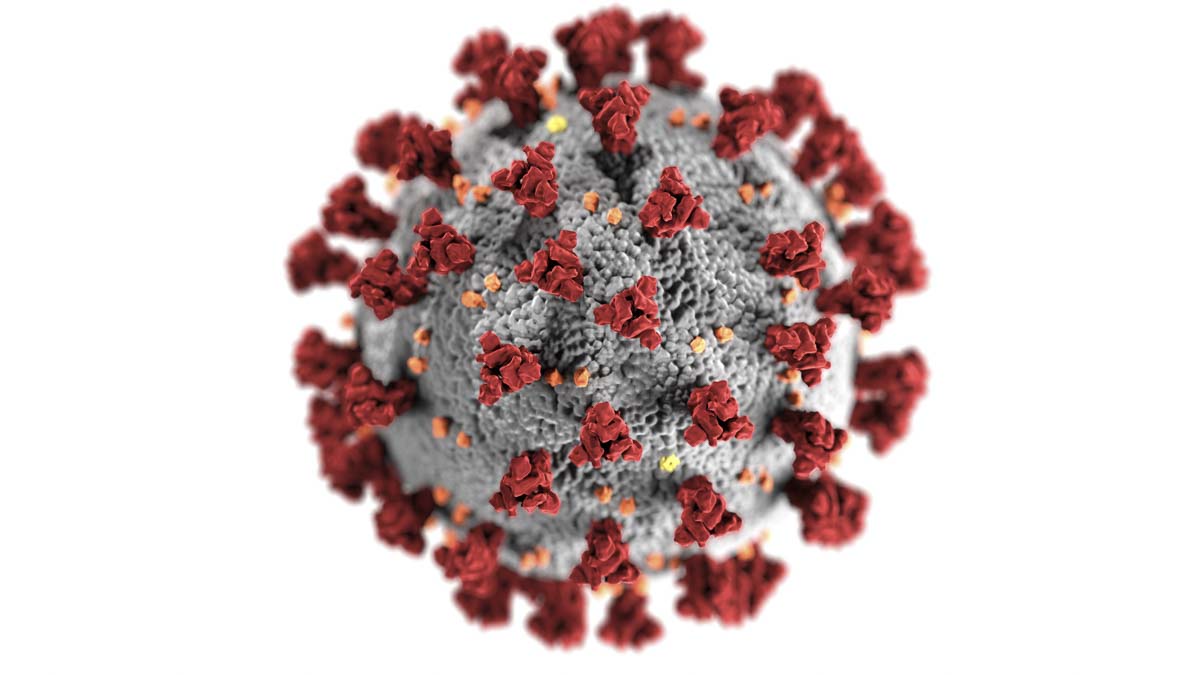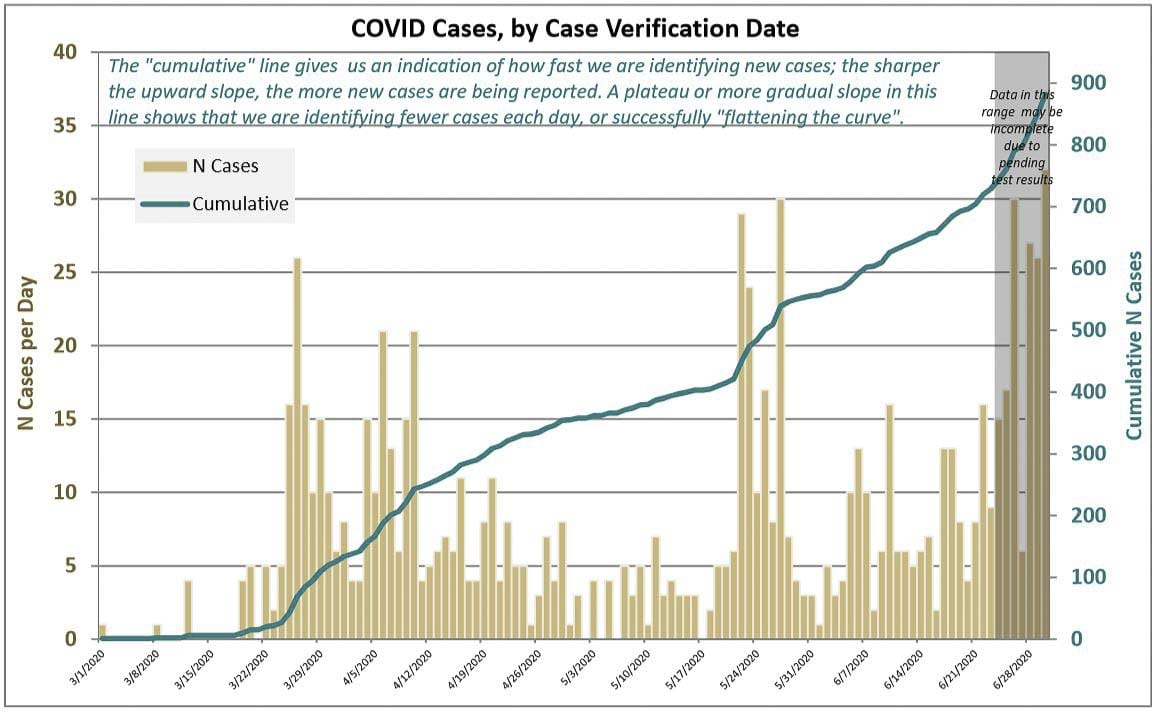The warning comes as the county sees a large spike in COVID-19 cases since last week
CLARK COUNTY — If you were among the thousands planning to throw a party this Fourth of July weekend, Clark County’s Public Health Officer has a request to make of you.
“I’m actually urging people to stay home,” says Dr. Alan Melnick. “I know people want to get out there and celebrate, but given the alarming increase … I’m really concerned about the weekend.”

The warning, which is sure to be unpopular, comes as the county weathers its largest single-day increase in confirmed COVID-19 cases since the outbreak began.
On Wednesday, Public Health announced 40 new cases had been confirmed, topping the previous single-day record of 34 set during the outbreak at Firestone Pacific Foods in Vancouver.
“The percentage of tests that are positive are going up which is a sign of how much is out there,” Melnick said during interviews on Wednesday afternoon. “And then you mix July 4, where people may not adhere to these recommendations, and we have a perfect storm.”
In his Board of Public Health presentation on Wednesday morning, Melnick noted that The Vancouver Clinic, which has done the bulk of the testing in the county, had seen their positivity rate climb to 2.71 percent in the past week, from 1.71 percent the previous eight weeks. Kaiser Permanente noted an increase from less than one percent to nearly three percent of tests returning positive last week.
“The testing has been about the same or maybe increased slightly, but the number of cases has increased much greater than that,” Melnick told Clark County Today.
Including the numbers announced Wednesday, the county has seen 162 new cases since June 23, nearly equaling the number of positive tests over the first three weeks of June.

Last Friday marked three weeks since the county entered Phase 2 of Gov. Jay Inslee’s four-phased Safe Start Washington reopening plan.
The county filed an application on that date to move to Phase 3, but has yet to receive a decision from Secretary of Health John Wiesman.
“He is aware of our increased number of cases,” Melnick told the Clark County Board of Public Health. “I think it’s really important that the Secretary of Health knows what’s going on. He’s gonna find out anyway.”
In general, the state calculates cases starting from six days ago in order to account for a lag in reporting. That would put the county under the threshold of 25 cases per 100,000 residents, Melnick said, but they’ve seen a massive increase in the past week.
To reach the metric set by the state, the county would need to remain at or below nine new cases per day. Since late last week, the rate has been closer to 20 per day, Melnick said.
“I hate to speculate, but I think there’s a chance that we might be put on pause so that they can look the data over,” Melnick told the board.
Workplaces and social gatherings lead spread of infections
As for where the new cases are coming from, the county noted that case investigators had interviewed 72 people who tested positive between June 23 and 29.
Out of those, 48 were able to give a relatively clear picture of where they had been in the past 14 days.
Eleven of those believed they had been exposed in a small social gathering of ten or fewer people.
“More concerning, maybe, (is that) three people reported actually being at a social gathering between 11 and 15 people,” Melnick noted. “So there are those kinds of gatherings going on.”
Twenty of the cases said they likely caught it from within their own household.
Another 20 indicated they had recently traveled outside of Clark County, most of those outside of the Portland Metro area.
Two others said they likely caught it from their office or workplace.
The target for Phase 3 is no more than two outbreaks per week, meaning two cases at a single workplace or congregate setting within two weeks, or a single case at a long-term care facility.
Clark County has had nine outbreaks during the last week, Melnick said, including an auto shop (2 cases), a trade school (2 cases), outpatient healthcare clinic (2 cases), machining business (2 cases), plumbing business (3 cases), and two cases at an export company.
There were also two cases linked to a nursing home, two at a skilled nursing facility, and one at an assisted living center.
“In terms of our case investigation, we have about 29 people on quarantine right now,” Melnick said, noting that none of the businesses with outbreaks were currently closed after isolating close contacts
Hospitalizations remain low
Despite the rapid increase in new cases, the number of people in Clark County hospitals has remained relatively low.
As of Wednesday, there were eight people with confirmed cases between Legacy Salmon Creek and PeaceHealth Southwest.
With 60 percent of hospital beds occupied, 2.4 percent of those was someone with a confirmed or suspected COVID-19 case.
Still, Melnick cautioned, it’s too early to assume the hospitalization data means the virus has become any less severe.
The majority of recent cases have been primarily in younger people, especially those contracting it at work or social gatherings.
“They don’t live in a bubble. They’re going to interact with other family members, including older family members,” Melnick cautions. “With flu, which has a shorter incubation period, if there’s more transmission, you see the outcomes pretty quickly. Here, there’s a lag time, which can be a month, and by that time the damage has been done, and we have our hospitals overflowing and our ICU beds are gone.”
Research shows the virus is less likely to spread in outdoor settings, with the majority of transmissions occurring in close contact settings, defined as being within six feet for longer than 15 minutes.
If people are planning to gather this weekend, Melnick says they should be wearing face coverings and remaining six feet apart if at all possible.
Under Phase 2, gatherings of more than five people are not allowed. Local law enforcement has been clear that they intend to take an education-first approach, and are unlikely to issue citations or fine people for breaking that order.
Still, Melnick says the recent increase in cases should provide plenty of warning for people who intend to gather that they should either change their plans, or take precautions.
“There’s more disease out there in the community, the numbers are going up,” he added. “You combine that with people who want to gather together and not observe physical distancing and (use face masks), and it’s a recipe for a huge increase in cases.”
A note about antibody testing
In his presentation Wednesday morning, Melnick noted that the Centers for Disease Control (CDC) has been conducting serology tests in several parts of the country in an attempt to determine how many undiagnosed cases may be in the population.
Unsurprisingly, places like New York City, which had a severe outbreak and a much denser population, saw a higher prevalence of antibodies in serology testing.
Out of 2,482 samples collected between March 23 and April 1, nearly seven percent had COVID-19 antibodies. That number would indicate approximately 641,800 actual COVID-19 infections in the metro region, which is 12 times higher than the 53,800 confirmed cases that had been reported in that time period.
Similarly, the Western Washington region, including King, Pierce, Snohomish, and Kitsap Counties, saw a 1.13 percent seroprevalence estimate out of nearly 3,300 samples collected. That would put the actual case number at more than 48,000 before April 1, which is 11 times higher than the actual number of reported cases.
Melnick cautions that since the common cold is often caused by a coronavirus, antibody testing is prone to a high number of false positives. Still, it lends some perspective to the thinking this virus may have a higher-than-expected prevalence of asymptomatic cases.




